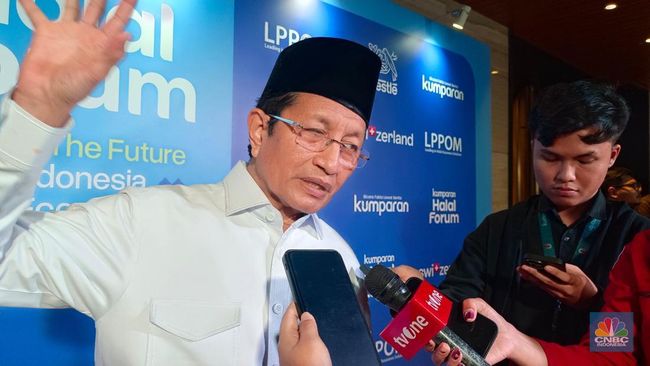On Wednesday, a rumor began popping up in Washington about a momentous policy change: the White House, it was said, would issue an executive order on Friday that would finally preempt state AI laws, handing over those regulatory powers to the federal government. The minute it leaked online, lawyers and policymakers began to scour every sentence of it. There was a lot about it that seemed politically unfeasible; there was even more that seemed overbroad, possibly illegal. There were a lot of agencies that had suddenly been cut out.
But crucially, they noticed how much power would have been handed to a certain South African tech-billionaire-turned-special-government-employee who’d tunneled his way into the West Wing — not Elon Musk, but the other one.
In every section of the draft order, President Donald Trump was directing his cabinet secretaries and agency heads to imminently issue reports and guidance on how to punish states with AI laws, within the next 90 days. In the Attorney General’s case, they had 30 days to establish an entire legal task force to sue those states. Every single one of them would have to consult David Sacks, the Special Advisor for AI and Crypto — and one of the most influential tech venture capitalists in the world — while executing the order.
“I don’t want to say it was a power grab. That’s too strong of a term,” said a tech policy adviser close to the White House. “But it’s definitely a consolidation, as it were, of his power.”
The MAGA universe immediately exploded, with War Room host Steve Bannon — who’d managed to help kill a previous attempt at an AI moratorium in the Senate this year — dedicating part of his Friday show to the draft order. In Congress, Democrats revolted publicly; tech-skeptical Republicans were quietly preparing their statements. The AI policy world immediately issued reports illustrating how much power would have been sucked into the hands of the White House. The order had been scheduled to be signed on Friday — and then it never was.
Outside the White House, the AI executive order, had it been signed, would have been legally unenforceable. But inside the White House, it would have been treated as an imperial mandate. Trump’s executive orders are historically designed to force his underlings to get his will done immediately, legality be damned, and the fallout tends to be irreversible by the time that the courts find his actions illegal. His tariff order, for instance, may soon be overturned by the Supreme Court, but not before causing trillions in economic losses and damaging the US’s international relationships.
Asked for comment, the White House press office email run by Karoline Leavitt refused to comment on the record, instead only insistently asking us to name our sources.
And from there, it would have been used as a threat against the states. “I suspect that if it’s effective, the most effective part of it will be having a chilling effect on state legislation,” Charlie Bullock, a senior research fellow at the Institute for Law and AI, told The Verge. One section of the draft would have allowed the government to pull any federal funding from states in violation of the order — not just rural broadband grants, which had been used as leverage in previous preemption fights, but anything from highway funds to education grants. “Even if [a state] can win a court case to make them give them that funding eventually, it would take a long time. States might be convinced by that.”
As such, it would have turned Sacks into the US’s AI policy gatekeeper in one fell swoop.
Though there are several White House officials with ties to the tech industry, Sacks, who has a provisional government employment status, is seen by Washington insiders as Trump’s closest conduit with the big-name tech CEOs, who consider him as a peer. (Though Vice President JD Vance did work in Silicon Valley prior to politics, he never did break into the three-comma club.)
“He’s trying to maintain America’s competitive edge in the big picture, and you could say, in a more selfish manner, he’s trying to protect the tech industry [with] a more parochial, These are my people approach,” said the tech policy adviser close to the White House.
But Sacks was also trying to neutralize a third, internal threat: the political forces within the executive branch, both on the progressive left and hard MAGA right, that were hell-bent on curbing his influence.
Even in this hyperpartisan climate, the left and right share a common cause in regulating the excesses of Big Tech, and will even publicly join forces to oppose them. And it apparently takes place behind the scenes, too. As the tech policy adviser described it, the informal internal anti-Sacks alliance consisted of holdovers from the Democratic Biden administration “that were hyper-regulating and wanting to break up tech companies,” and the hard-right MAGA officials in his current administration “who don’t trust tech, and similarly want to regulate technology companies — either on the state level or on the federal level — and kneecap them.”
According to those analyzing the bill, it was telling which entities had been completely shut out.
The first move, spotted by tech policy experts, was identifying who’d been cut out. In 2023, President Joe Biden’s massive AI executive order empowered a broad swath of agencies to develop AI policy, and most — if not all of them — were suddenly absent. The National Institute of Standards and Technology (NIST), for instance, had been delegated to research AI risk management, evaluation, and standards development. (Those concerns, incidentally, were recently encoded in California’s AI safety law — a law that the AI industry has strenuously opposed.) Also missing: any mention of the Office of Science and Technology Policy (OSTP), which centralizes the administration’s tech policies into one place before being brought to the President; the Cybersecurity and Infrastructure Security Agency (CISA), the DHS agency that focuses on national security internet threats; or the Center for AI Standards and Innovation (CAISI), the name of which speaks for itself.
“Maybe in practice, David Sacks will be consulting them and the [Office of Legislative Affairs] might be communicating with them,” said Riki Parikh, the policy director for the bipartisan Alliance for Secure AI and a former lawyer for the Biden administration. “But it’s surprising to not list them out.”
Instead, the proposed moratorium would have been carried out by four agencies: the Department of Justice, which would have sued the states in violation of the order; the Department of Commerce, which would analyze which states could lose their broadband funding; the Federal Trade Commission, which would have investigated which states would be engaged in “deceptive conduct” over ideological bias; and the Federal Communications Commission, which would have developed a federal AI reporting standard.
All, naturally, would be advised by Sacks — and all of them now had power to pursue ways to punish states that wrote or enforced AI laws.
Populist Republicans, particularly those in the MAGA base, immediately saw how much Sacks had influence throughout the entire order, and how much the order would threaten any state. Though they had briefly aligned with the tech right in getting Trump elected, Republicans increasingly turned on their allies over a complete ideological mismatch: they believe AI is a threat to conservative family values and will steal American jobs, are allergic to federal incursion into states’ sovereignty, and hold a general disdain for how quickly tech CEOs went from supporting Democrats to Trump. Several red states have begun writing their own AI regulations, and governors like Florida’s Ron DeSantis and Arkansas’ Sarah Huckabee Sanders have openly voiced their dissent against a moratorium. Even Trump’s open support of a moratorium hasn’t swayed the base.
“Purely just from a political strategy standpoint, the base of the Republican Party is not with David Sacks and [fellow VC and Trump supporter] Marc Andreessen on this. They’re just not,” said Brendan Steinhauser, a longtime Republican strategist and the CEO for the bipartisan Alliance for Secure AI. ”And I don’t think they care because they’re just like, It doesn’t matter to us. We’re here to get what we want and there’s three years remaining in this administration. We were Harris and Biden and Hillary supporters, and then we became Trump supporters because it’s convenient.”
Little did the AI world anticipate that MAGA would immediately try to kneecap them, even joining forces with the progressive anti-tech factions in government, and that their aggressive Silicon Valley approach via executive order would have further widened the rift. But it was enough for them to back off temporarily. The following week, a new rumor circulated Washington that the administration would sign an AI-related order, and they did — but for a completely different, non-preemption, very uncontroversial project directing the National Labs to engage more with AI development.
The Special Advisor on AI and Crypto was mentioned only once.
Follow topics and authors from this story to see more like this in your personalized homepage feed and to receive email updates.

 2 hours ago
2
2 hours ago
2








































